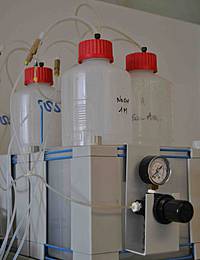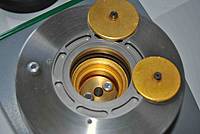
LC-ELSD
Evaporative Light Scattering Detection
Evaporative Light Scattering detector is a good alternative for the detection of analytes with limited or no chromophores.
It is located immediately after the stationary phase of the LC column to detect compounds as they elute from the column.
Basically all compounds which are less volatile than the mobile phase can be detected. The method is based on three successive steps:
- Nebulization: The eluent from the column is sprayed with an inert gas from the narrow orifice of a nebulizer to generate a homogeneous mist.
- Evaporation: The mobile phase of the nebulized eluent is evaporated into a drift tube at low temperature.
- Detection: The stream of solid particles enters a flow cell which includes a light source and a photomultiplier. The intensity of the light scattered by the particles is directly related to the mass of the eluted compound.
The presence of an analyte gives a response assumed to be proportional to the concentration. The instrument’s response to the analyte in the unknown should be compared with the response to a standard.
Our company
PHYTOSAFE
2 rue Marx Dormoy
64000 Pau
FRANCE
Tél : +33 (0)5 59 84 79 91
Fax : +33 (0)5 59 84 80 55
Email : contact@phytosafe.com
Terrestrial ecotoxicology
Acute toxicity to earthworms
Our company
PHYTOSAFE
2 rue Marx Dormoy
64000 Pau
FRANCE
Tél : +33 (0)5 59 84 79 91
Fax : +33 (0)5 59 84 80 55
Email : contact@phytosafe.com
